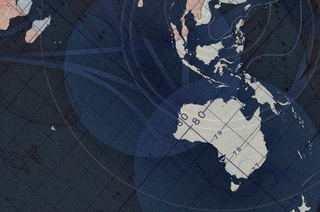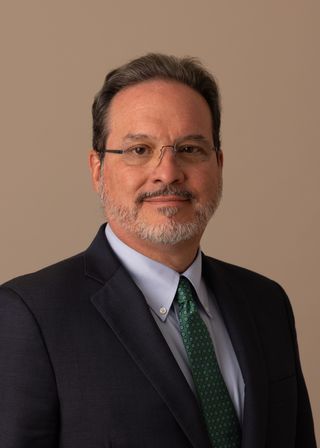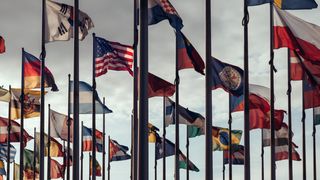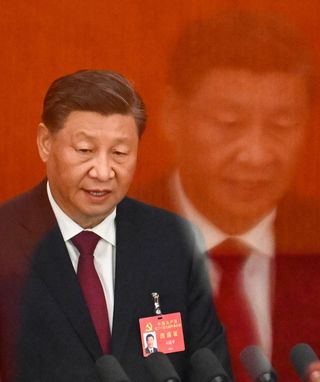The US Studies Centre endeavours to provide analysis, insights and solutions on the United States and the world for policymakers, businesses, scholars, and the general public. This task is particularly important and challenging as we unpack the first act of the second Trump administration. Since returning to power, President Trump has overwhelmed his opposition and the world with a dizzying tempo of executive orders, Truth Social posts, high tariffs, deportations, funding cuts, and diplomatic threats. His supporters applaud this shock and awe approach to long entrenched institutions and ways of doing business. His critics and many business leaders and US allies warn that this disruptive and unpredictable tempo cannot be sustained without doing serious damage to the economy, alliances, and even President Trump’s own political standing. Some worry deeply about the longer-term consequences for American democracy.
Interpreting such an unprecedented historical moment requires a careful assessment of both agency and structure.
Interpreting such an unprecedented historical moment requires a careful assessment of both agency and structure. Agency — the actions and impact of individual leaders — tends to command media attention. It is much easier to describe what Donald Trump said or tweeted than to explain the arcane workings of the US Constitution or the political dynamics caused by market reactions to his policies. And President Trump’s entire leadership style is to dominate the media cycle and national narratives so that the focus stays on him and his agenda. However, all leaders are constrained by structure — by markets and the checks and balances of the courts, Congress, and media as well as key allies and partners.

What can we say about agency in the first few months of the Trump administration? First, the shock and awe strategy has been effective — for the time being. With an average of two executive orders a day (far outpacing any previous US president), Trump has bypassed Congress and deprived his opponents of legislative tools to defy him. The Department of Government Efficiency (DOGE) under Elon Musk has caused paralysis in the broader bureaucracy by deleting funding for agencies, non-profits and universities. Officials and civil society leaders worry about who might be next. Legal action and threats of funding cuts have placed law firms and universities on the defensive. Republicans in Congress hesitate to defy the President’s agenda lest they be threatened with a primary opponent or negative campaigns from the president.
Something else has become apparent about the president’s style: he has largely abandoned whatever process there had been in the first Trump administration. Previous presidents entrusted advisors to debate policy options to ensure consideration of the political, military, economic and diplomatic implications of major decisions such as tariffs or diplomatic agreements. Veterans of Trump 1.0 described a chaotic system but nevertheless pointed to traces of deliberation and debate. Thus far Trump 2.0 has been more akin to court politics rather than the deliberative strategic process envisioned in the 1947 National Security Act. Different parts of the administration own different objectives — competing with China; deregulating the economy; using tariffs to raise revenue (or reshore manufacturing or gain negotiating leverage, depending on the group); cracking down on immigration; pressuring political opponents. They often pursue mutually exclusive objectives in separate silos. It should be obvious that massive tariffs on allies would be inconsistent with aligning to compete against China, for example. But the president seems wedded to being the decider on all these strategies without the benefit of staffing, analysis, or longer-term planning of how they fit together or what the consequences might be. If anything, the president appears to see this unpredictability and chaos as a source of leverage and flexibility.
And that brings us to structure. President Trump’s approach shows the least deference for established norms and institutions of any modern US president — and many historians would argue of any president ever. Some worry institutions might not survive — but institutions are stubborn things, particularly when they have centuries of history behind them. Republican members of Congress may be loath to challenge President Trump publicly, for example, but given the opportunity to elect their leader by secret ballot, Republicans in the Senate chose to not elect the candidate seen as a Trump loyalist. The House Republicans are more aligned with Trump, but presidents almost always lose their first midterm elections, and the Republicans have a razor-thin majority in the House they must defend in 2026. It is possible that President Trump will continue to defy Congress but lasting change comes through legislation and not executive orders (which a successor can overturn in the first hour). President Trump also still needs Congress to have a budget — what he calls a “big beautiful bill” — without which he cannot make his economic plans stick, especially for tax cuts. Court decisions are also increasingly going against the Trump administration’s policies. It is possible the Trump administration will also defy or ignore the courts, but in polls 83% of Americans oppose that move. These institutions are not the passive entities they sometimes appear to be contrasted with President Trump’s aggressive battle rhythm.
It is also important to understand how we arrived at this moment in history. The previous international system of benign globalisation began to unravel at least a decade before the second Trump administration began.
One critical factor in the resilience and resolve of these other institutions will be the weight of public opinion. At the 100 day mark, President Trump had the lowest approval rating of any new US president on record. Significant majorities are unhappy with his policies on tariffs, the economy overall, leadership style, and even immigration. In fact, not a single one of his policies had majority support from the public. This is not entirely surprising: polls last year suggested that Trump won the election primarily because the public wanted him to tame inflation. His tariff policies are making inflation worse and destabilising markets where 60% of Americans have their retirement funds invested. And the impact of the tariffs has only just begun to hit the consumers. Agency — the ability of a leader to bend or break institutions and structure — is highly contingent on public sentiment. President Trump will not be able to turn this negative sentiment around easily.
It is also important to understand how we arrived at this moment in history. The previous international system of benign globalisation began to unravel at least a decade before the second Trump administration began. Integration of China into the global economy as envisioned in the World Trade Organization negotiations with Beijing was not working for the manufacturing economies of the world as Chinese mercantilist practices eroded jobs from Michigan to Osaka and Milan. On this point there is much less partisan debate in the United States (or Japan, South Korea or much of Europe). At the same time, while American public support for alliances remains high, the need for allies and partners to do more in defence has been a constant theme. Illegal immigration has been another major problem for the United States where the public was demanding remedies. All of these challenges would be there — regardless of whether Donald Trump had been elected or not — for the United States but in many areas for Australia as well. It is not clear what the new international order looks like, but it was not broken by Donald Trump. It remains to be seen whether he will shape the new order or just be a transitional figure who contributed to the breaking of the old order.
Historical consciousness also matters as we seek to understand what is new, what is enduring, and what is constant. One important point of consistency: the United States has held a near constant share of around 25%global GDP for more than 30 years. In fact, the US share of global GDP today is about what it was in the early 1990s, when scholars and journalists spoke of American unipolarity and the triumphant “end of history.”And there have been previous cycles of certainty about secular American decline or dysfunction that were proven completely wrong (the post-Vietnam years or the Global Financial Crisis, for example).It is not clear how lasting the economic damage of hyper tariffs, the soft power setback of attacks on friends like Canada, or cuts in aid will last. It is possible that the damage could become much more acute than it is now or last for some time. Past reinvention does not guarantee future repeats, but that history of American cycles of populism, disruption and reform is important context.
A sense of history and an assessment of agency and structure may not tell us exactly what comes next, but they do provide context and bound the scenarios. And for US allies like Australia, they help to map out how best to work with the United States through this tumultuous period. There are always opportunities in disruption and chaos. The worst strategy would be to just play defence and try to preserve the old.
The chapters in this volume are organised to help consider the options: assessing what we have seen President Trump say; what policies and actions are actually unfolding on the ground; where the debates and institutional collisions are occurring; what the implications and scenarios might be; and what should be done about it.










.jpg?rect=795,0,2010,2400&w=320&h=382&fit=min&auto=format)






